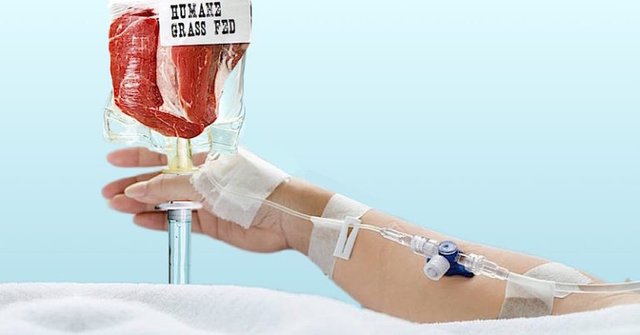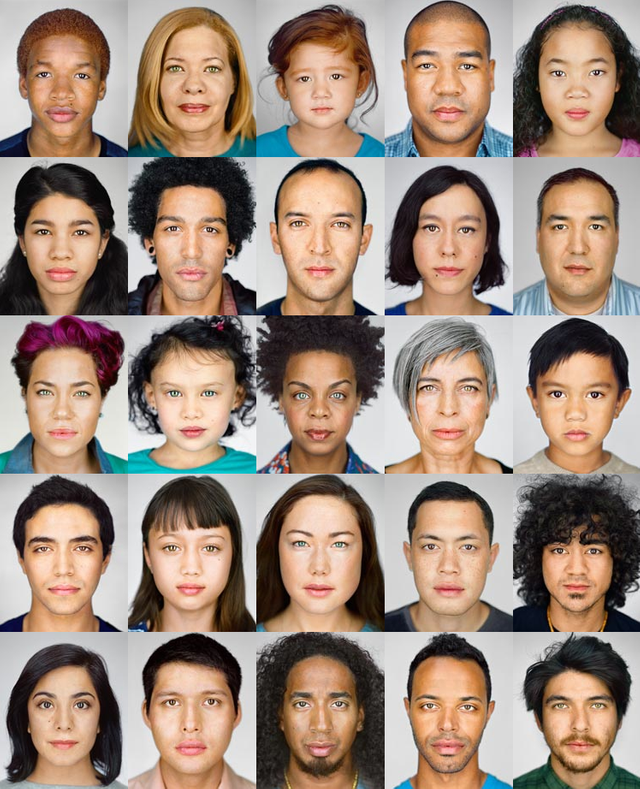
Bio-Individuality & The Myth That Some People ‘Just Need Meat’
By Carla Golden | July 24, 2017 | Categories: Common Justifications for Eating Animals

Illustration from The Princess and the Pea.
Increasingly, there are many institutions and professionals who teach a “Bio-Individual” approach to nutrition. But what does this mean, and does it hold any merit?
Bio-Individuality basically translates to: “There’s no one-size-fits-all diet – each person is a unique individual with highly individualized nutritional requirements.” The Bio-Individual Diet paradigm holds that “Personal differences in anatomy, metabolism, body composition and cell structure all influence your overall health and the foods that make you feel your best. That’s why no single way of eating works for everyone. The food that is perfect for your unique body, age, and lifestyle may make another person gain weight and feel lethargic.” Proponents of this idea also often believe that “men eat differently than women, children eat differently than adults, and… our personal tastes and inclinations, natural shapes and sizes, blood types, metabolic rates and genetic backgrounds, all influence what foods will and won’t nourish us.”
Bio-Individuality & Nutrition: Breaking It Down
1. Bio means “life” in Greek. Individuality means “the particular character, or aggregate of qualities, that distinguishes one person or thing from others; sole and personal nature.”
Bio-Individuality lends itself to mean that each of us has “unique life.” Is this true? Of course it’s true, but “unique” is relative. As humans, we are very different from one another in many ways if you compare two people. But if you compare a human to a Jamaican Rock Iguana, those two humans begin to seem pretty similar and, as it turns out, they are.
2. So is there a “one-size-fits-all” diet for humans?
Yes. When born healthy, humans are anatomically very similar, warranting a natural diet [lifetime food, not a weight-loss plan] intended for human anatomy & physiology.
Elephants in India don’t need totally different food than elephants in Africa. Horses around the world don’t need inherently different foods than one another. Humans have common anatomy, though shapes and sizes may vary. “Animals who are anatomically and physiologically similar thrive on similar foods. Cows eat grass, leopards eat meat, and hummingbirds eat nectar,” writes Dr. Douglas Graham.

Starting with our head, we see with our eyes in full-color scale to spot red apples, orange tangerines, green leaves, and pink berries, unlike predators who do not need full-color vision to spot movement and who have noses that detect the scent of prey in a nuanced way that humans can not.
Our upper and lower jaws are stacked on top of each other. Click your molars now and you’ll feel that this is true. Jut your lower jaw forward, sticking out your chin, and you’ll feel that our molars are meant to grind food forwards and backwards. We can also move our chins side to side indicating that our jaws have lateral movement too. Predators do not have forward or lateral movement of the jaw because they clamp down on prey like a metal trap to hold and rip flesh. We are outfitted with chewing tools (teeth) that are designed to masticate or grind our nourishment.
Humans have teeth that are relatively blunt and flat. We may have some sharper teeth on the sides for breaking fruit skins, but nothing that would cut into the hide of prey. Predators with true canines have elongated, pointed side fangs that are used as clenching daggers.
We have naturally alkaline saliva chemistry in our mouths which produces carbohydrate digesting enzymes. Predators have naturally acidic saliva chemistry that produces no carbohydrate digesting enzymes. Predators secrete the enzyme uricase from their kidneys to break down digesting flesh. Humans do not create nor secrete any uricase.
Both the small and large intestines of humans are long in ratio to overall body length. Fiber from food is required to move food through this long channel. Predators have short intestines and have no need for fiber in their diet. It takes humans 12-18 hours to fully digest a meal while a predator needs only 2 to 4 hours to digest meals.
Dr. Garth Davis reports that only 3% of American humans are protein deficient from malnourishment, starvation, or anorexia. However, 97% of Americans are fiber deficient.
We have arms that are typically the length of half our height and we can raise them overhead while we stand up on our two legs and feet. We need not look for food only on the ground thanks to our height and reaching advantages. At the ends of these arms we have prehensile hands, not paws, with opposable thumbs that can grab and hold a hand-sized piece of immobile food. Our nails, even when grown, are not sharp enough for latching into prey.

Floating Vegetable Market, Dal Lake, Kashmir.
Foods that are full of color, packed with fiber, composed of carbohydrates, and that may grow on the ground or in bushes or trees are natural foods for humans based on our anatomy & physiology.Fruits, vegetables, roots, grains, legumes, nuts, and seeds meet these anatomical requirements, are relatively easy to secure, and nourish us completely. We need not look any further than our own bodies to identify how and what we are meant to eat. On average, biochemically all humans are 99.5% similar to any other humans. If you have met a human with drastically different anatomy than what I’ve presented here, aside from deformity, birth defect, or surgery, please let me know.
See also: A Response to the Claim That Eating Animals is Natural
3. Personal tastes and preferences are strong.

photo courtesy of veganstreet.com
We are trained and we train ourselves by exposure (geographic location, the grocery stores near us, the restaurants we visit, the people with whom we eat and who cook for us) to prefer the foods we eat. But these preferences are not locked in. Taste buds change and can be retrained mindfully over time. Poor habits sometimes die hard. But let’s not mislead ourselves into thinking that personal tastes and preferences are proper indicators of right nutrition.
4. When born into and living in a state of health, we are very similar to one another in our nutritional needs, as are all members of a species. It is only when the body is in a state of disease that we need personalized nutrition. But this doesn’t mean that some people will need to eat the uppermost leaves from the tallest trees, that some people will need to scour the bottom of river beds, and that others will need to pick away at rotting carcasses. **Even in a state of disease, the realm of natural food choices are the same, **just some specific foods may need to be limited or omitted. For example:
• Those who have blown out their thyroid gland need to avoid goitrogen-containing foods like cruciferous vegetables.
• People who have cancer or diabetes may want to omit or limit fast carbs like whole, raw sugar-dense fruits.
• Those who have heart disease may wish to omit whole plant fat intake.
• A person who is allergic to nuts will definitely need to avoid nuts.
• Someone who has had their colon removed may need to limit and monitor their fiber intake.
It is only in a state of disease that individual & customized nutritional approaches become necessary. And this doesn’t mean that an individual needs to eat outside the realm of natural human foods, it just means that some foods need to be omitted. And there may be natural supplements that some people need to take in order to come out of their unique state of disease. Do we need different caloric input based on our muscle mass (gender, athleticism, age) and activity level? Of course. But we don’t need to choose these calories from foods that do not support human anatomy.
So what’s behind this Bio-Individuality approach?

The myth that some people ‘just need meat’ is the most common argument given in favor of so-called humane animal farming and slaughter.
In my opinion, Bio-Individuality is a euphemism for permissive omnivorism. It is a fancy term that permits people to believe that some people need to eat animal-based consumables (meat, dairy, eggs, honey) while other people may not.
It is a safe way of not taking a stance for or against vegan, vegetarian, paleo, ayurvedic, macrobiotic, raw, low carb, high carb, low fat, high fat, high protein, fruitarian, blood-based diets, and other approaches to eating.
Bio-Individuality is a way to not offend anyone, and a way to sell to everyone.
Let me be clear, honest, and take a risk of offending: there is no nutrition in the flesh or fluids of animals that can not be gotten from where the animal got it – the sun and the earth.
At one time was it more efficient to eat the nutrient stores in the flesh and fluids of an animal than it was to gather leaves and berries? Absolutely!
Today is it more efficient to go to the grocery store and pick up animal flesh and fluids rather than vegetables, fruits, nuts, seeds, grains, legumes, and tubers? No. You still have to go to the same store, push the same buggy, go through the same register, and haul your goods home.
It’s also important to note that our nutritional needs and preferences are only one part of the equation. We are each an integral part of a vast global system. There is no point in being a healthy person on a sick planet; food choices must take into account environmental concerns to be fully responsible choices.
What makes us different from one another doesn’t dictate what we eat.
Having blonde or brown hair, green or grey eyes, tall or short height, location-based speech accents, different personal experiences, body proportions, sexual orientation, family structures, personalities, habits, unique microbiomes, and other details do not indicate what foods to eat. We are all variations of the same basic human blueprint and when that blueprint is encoded with health, we can all thrive on whole, plant-based foods.

Humans are individuals, but just like members of all other species, we do not subsist on ‘bio-individual’ nutritional requirements.
 About Carla Golden
About Carla Golden
Carla Golden is a vegan nutritionist and a massage therapist in private practice specializing in therapeutic essential oils. With a Bachelor of Science degree in Holistic Health & Healing, she enjoys helping others discover the benefits and liberation inherent in a whole food, plant-based vegan diet. The Vegan Key™ is her newest online nutrition program based on tried and true methods which foster performance, vitality, and purpose. Join Carla at www.carlagoldenwellness.com.
View all posts by Carla Golden →
http://freefromharm.org/common-justifications-for-eating-animals/bio-individuality-myth/
Copying/Pasting full texts is frowned upon by the community.
Some tips to share content and add value:
Repeated copy/paste posts could be considered spam. Spam is discouraged by the community, and may result in action from the cheetah bot.
Creative Commons: If you are posting content under a Creative Commons license, please attribute and link according to the specific license. If you are posting content under CC0 or Public Domain please consider noting that at the end of your post.
If you are actually the original author, please do reply to let us know!
Thank You!
Downvoting a post can decrease pending rewards and make it less visible. Common reasons:
Submit
The link to the article is at the bottom of each of my posts.
Feel free to click it.
Oh did you notice I even provided a brief description and link to the author?
Go bother those people who only post about bitcoin.
Downvoting a post can decrease pending rewards and make it less visible. Common reasons:
Submit
Where's the community outrage with my posts? It's just you telling me what 'the community' thinks and feels about it.
I didn't leave fb for this dictatorship-type harassment
Downvoting a post can decrease pending rewards and make it less visible. Common reasons:
Submit
Hi! I am a robot. I just upvoted you! I found similar content that readers might be interested in:
http://freefromharm.org/common-justifications-for-eating-animals/bio-individuality-myth/
Downvoting a post can decrease pending rewards and make it less visible. Common reasons:
Submit